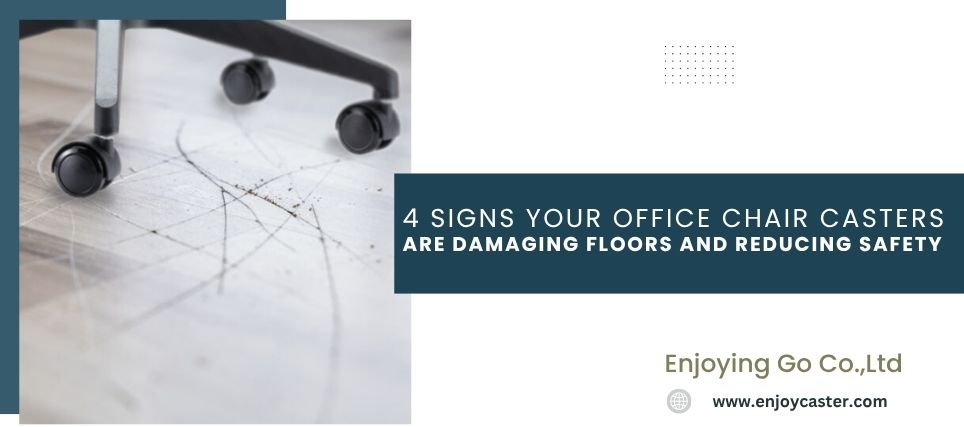4 Signs Your Office Chair Casters Are Damaging Floors and Reducing Safety
In the world of ergonomic seating and workspace optimization, office chair casters may be small, but they have a major impact on movement, user comfort, and floor maintenance.
As a furniture brand, procurement officer, or space planner, failing to detect early signs of caster wear can lead to scratched wooden floors, compromised seating safety, and unexpected replacement costs.
Based on over 20 years of caster manufacturing experience, Enjoying Go Co., Ltd. outlines four key warning signs that indicate it's time to inspect or replace your chair wheels.
1. PU Caster Surface Cracks and Material Degradation
Polyurethane (PU) casters, especially those used for 5+ years, may start to crack or flake due to hydrolysis, natural moisture absorption from the air over time.
This is a normal aging process for eco-friendly PU materials, which are designed to degrade gradually and return to the environment when discarded properly.
While minor cracking doesn’t immediately impair function, the fallen PU debris can scratch delicate flooring or signal upcoming failures.
Recommended Action:
Establish a regular inspection and replacement cycle, especially for high-use seating products.
2. Dragging Wheels or Movement Resistance
If a chair feels “stuck” or difficult to roll, it’s likely due to hair, dust, or grease buildup in the side axle or wheel mechanism.
This is common in environments like restaurants, salons, clinics, or industrial offices, where contaminants are frequent. If ignored, debris can jam the axle and eventually prevent the wheel from rotating altogether.
Recommended Action:
Choose casters with easy-to-clean designs for commercial spaces, and include wheel cleaning in your routine maintenance schedule.
3. Strange Noises or Chair Instability
When users report clicking, grinding, or unbalanced seating, the issue may lie in structural damage to the caster. This can be caused by:
-
Sudden impacts (e.g., users jumping into the seat)
-
Overloading beyond weight capacity
-
Floor gaps or uneven tiles affecting wheel alignment
In these cases, continued use can lead to damaged chair bases or injury from tipping.
Recommended Action:
Include caster inspection in post-installation quality checks and corporate maintenance SOPs.
4. Caster Separation or Detachment from the Base
If a caster falls off or detaches from the chair base, it should not be reattached and reused.
Forcing a loose wheel back into position may result in instability, further floor damage, or a serious fall risk for users. This is a clear signal that the caster needs to be permanently replaced.
Recommended Action:
Use reliable stem designs with strong socket retention. Educate clients to stop using chairs immediately when the wheels show signs of separation.
Conclusion: Start With the Wheels to Protect Your Brand and Users
While premium backrests or ergonomic cushions often get the attention, it's the five wheels underneath that define the user's day-to-day experience.
At Enjoying Go Co., Ltd., we believe maintaining caster performance is critical—not only for safety and comfort, but for your brand’s long-term value.
Whether you're manufacturing chairs, managing shared workspaces, or building your next office line, make caster quality and replacement cycles part of your preventive maintenance strategy.
For bulk orders, custom caster designs, silent or floor-safe wheels, our team is ready to support your needs with OEM/ODM expertise and stable long-term supply, please contact us and we will provide professional advice and stable supply.

